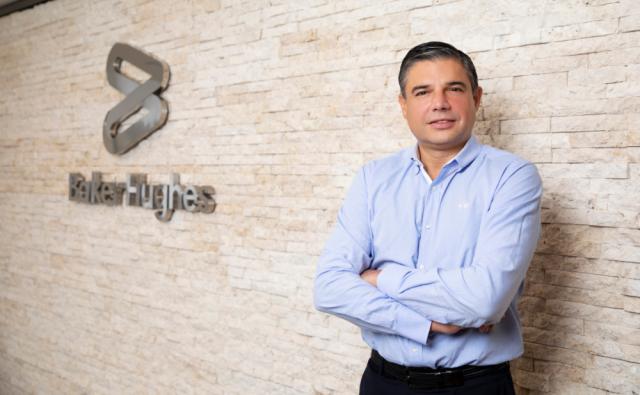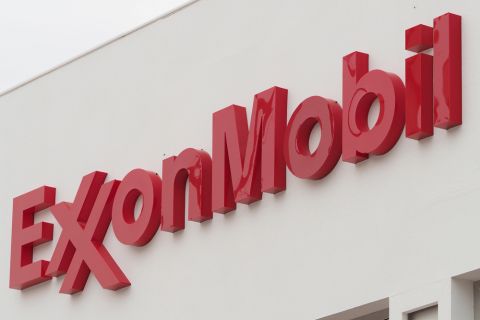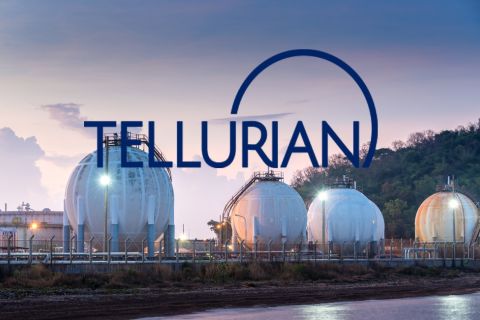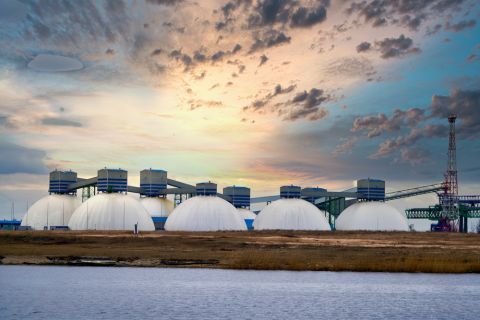
“Efficiency is the unsung hero of reducing global emissions,” said Lorenzo Simonelli, chairman and CEO of Baker Hughes Co. during Reuters’ recent Global Energy Transition Conference. (Source: Hart Energy, Baker Hughes Co.)
NEW YORK—Hopes are high on the ability of carbon capture, hydrogen and other technologies to move the world closer to net-zero goals, but there is also low-hanging fruit within reach, according to the CEO of a global energy technology company.
“Efficiency is the unsung hero of reducing global emissions,” said Lorenzo Simonelli, chairman and CEO of Baker Hughes Co. “According to the IEA [International Energy Agency], if today’s oil and gas operations were 10% more efficient, we would save approximately 500,000 tons of CO₂ per year.”
Energy efficiency was one of the three “undeniable truths about the energy transition” that Simonelli focused on during Reuters’ recent Global Energy Transition Conference. Agreement on these so-called truths—which also include investment and innovation along with partnerships and collaboration—can help accelerate moves toward net-zero by 2050 while prioritizing energy security, he said.
“We know that efficiency improvements can help the energy transition and, in many ways, efficiency improvements are low-hanging fruit for the industrial sector.”—Lorenzo Simonelli, Chairman and CEO, Baker Hughes Co.
The transition toward cleaner forms of energy and lower emissions comes as the world continues to cope with incessant energy market volatility, inflationary woes, supply chain pandemic-related recovery struggles and other supply concerns stemming from Russia’s invasion of Ukraine.
Recent geopolitical events have drawn attention to and heightened focus on the importance of energy security, affordability and sustainability, according to Simonelli, who said the energy sector must not forget access to affordable electricity as it aims to reach net zero.
“We must decrease emissions at the same time as increasing supply. As I said before, energy is good; emissions are bad,” Simonelli said. “Let’s prioritize the solutions to solve for it.”
Energy security and energy transition are two halves of one whole, not mutually exclusive objectives, he added.
Pulling the energy efficiency lever is one way to address the climate crisis.
“The cleanest, cheapest, most reliable source of energy is what countries can avoid using, while still providing full energy services for citizens. That is why the IEA refers to energy efficiency as the ‘first fuel,’” the IEA said in a June 2022 report. “Without early action on efficiency, the energy transition to net-zero emissions will be more expensive and much more difficult to achieve.”
Intensifying energy efficiency-related measures can avoid about 95 exajoules (EJ) of final energy demand in 2030 even as the economy grows, according to the IEA. Otherwise, energy demand could rise by 18%, instead of falling about 5% that year. Pathways include more technically efficient equipment such as vehicles and HVAC systems, electrification, digitalization and switching to more efficient materials or fuels.
“Natural gas and LNG’s environmental benefits over a fuel source like coal are clear and the efficiency is compelling,” Simonelli said. “Significant increase in LNG infrastructure investment is even more pressing in the context of global energy security.”
Baker Hughes’s efforts in this area have included partnering with customers to lower emissions and raise efficiency in operations through, for example, introducing hydrogen blends into existing infrastructure.
“We know that efficiency improvements can help the energy transition and, in many ways, efficiency improvements are low-hanging fruit for the industrial sector,” he said.
Simonelli also called on policymakers and regulators to incentivize innovation geared at lowering emissions, especially given the reliance on technologies—not yet commercialized today—in reaching net-zero goals.
“We must lower the costs, speed up implementation, and support a faster transition,” he added. “We need to focus more on new technology development for energy frontiers like hydrogen, CCUS, geothermal and energy storage. We want to see more cooperative funding among universities, corporations and other developers with the right regulatory frameworks and access to capital.”
Fundamental to advancing technologies, reaching scale and reducing risk are partnerships and collaborations, Simonelli added, noting there is no path to a successful energy transition without the two.
“We must collaborate more between public and private sectors, governments and companies, the academic and the business world and local communities who need access to energy and deserve an equitable and just energy transition,” he said. “We also must collaborate from our financial positions, co-investments, partnerships and alliances.”
During the past five years, Baker Hughes has made about $1 billion in what he called transformational investments. These include the recently announced acquisition of California-based Mosaic Materials Inc. to further develop and scale its carbon capture technology.
“We are not sitting still. … Collaboration leads to innovation, adoption and deployment of technologies at scale to get closer to net zero,” Simonelli said, calling on others to collaborate.
“We are stronger together as policymakers, corporations and consumers to advance the energy transition pathway,” he added. “We cannot step backward now. Collaboration is essential. No one can solve the climate change on their own.”
Recommended Reading
Exxon’s Payara Hits 220,000 bbl/d Ceiling in Just Three Months
2024-02-05 - ExxonMobil Corp.’s third development offshore Guyana in the Stabroek Block — the Payara project— reached its nameplate production capacity of 220,000 bbl/d in January 2024, less than three months after commencing production and ahead of schedule.
CERAWeek: Trinidad Energy Minister on LNG Restructuring, Venezuelan Gas Supply
2024-03-28 - Stuart Young, Trinidad and Tobago’s Minister of Energy, discussed with Hart Energy at CERAWeek by S&P Global, the restructuring of Atlantic LNG, the geopolitical noise around inking deals with U.S.-sanctioned Venezuela and plans to source gas from Venezuela and Suriname.
Exxon, Vitol Execs: Marrying Upstream Assets with Global Trading Prowess
2024-03-24 - Global commodities trading house Vitol likes exposure to the U.S. upstream space—while supermajor producer Exxon Mobil is digging deeper into its trading business, executives said at CERAWeek by S&P Global.
FERC Approves Extension of Tellurian LNG Project
2024-02-19 - Completion deadline of Tellurian’s Driftwood project was moved to 2029 and phase 1 could come online in 2027.
EIA: Blame Associated Gas Volumes for Sticky Low NatGas Prices
2024-03-14 - Low natural gas prices are forcing U.S. producers to finally pump the brakes on what has been record production. But the pullback in drilling will have muted effects on a market already glutted with too much gas, federal experts say.






